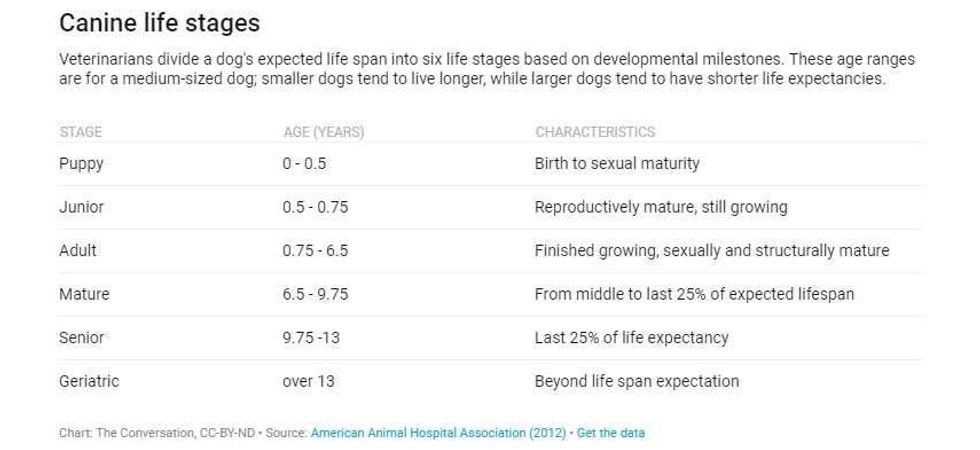News
Louis Staples
Jul 31, 2018

ISTOCK
Pet owners are always anxious to know how old their dog is in 'dog years', aka the age they are in relation to a human.
This is understandable, as most people dread the day that, inevitably, the partnership they have with their dog will come to an end.
There’s an old myth, which most people regard to be fact, that says one “human” year is like seven years for dogs and cats. This is because the average human lives around seven times longer than the average cat and dog, so it’s not completely unfounded.
But not not every dog (or, if we’re honest, every human) is “average-sized”, so this seven-year rule can never apply to all dogs. Bigger animals tend to die earlier than smaller ones do, meaning that the life expectancy of dogs can vary massively.
Both human and dog life expectancy has also changed over the years due to advances in medical and veterinary science.
Dogs are now divided into six categories, from puppy to geriatric, according to the American Animal Hospital Association Canine Life Stages Guidelines,
Life stages thought to be a better way to think about age, rather than assigning a single number.
Doctors already apply this logic to human age-specific health screenings, but of course these guidelines can be changed based on a physician’s or veterinarian’s examination of an individual subject.
Just as obesity or smoking can increase the 'real age' of a human, your pet’s overall health status can influence their 'real age'.
So at your next visit to the vet, ask about your pet’s 'life stage' instead of asking for a specific age, then you’ll be able to find out what health recommendations come with it.
H/T: IFL Science via The Conversation
More: This man carried his dog up an escalator because it was scared and it will make your day
Top 100
The Conversation (0)














